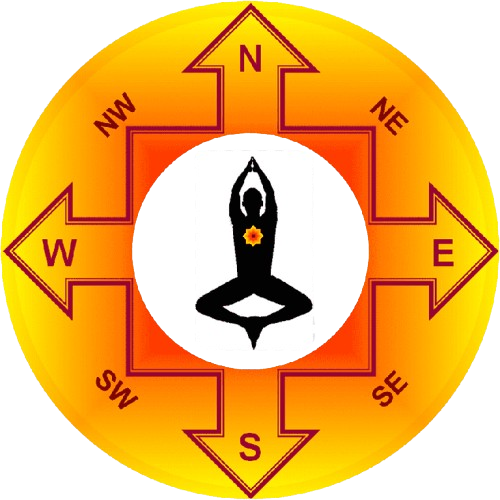What is Vastu?
Vastu (from the Sanskrit word Vastva, meaning “that which provides shelter”) refers to the science of creating harmonious living and working spaces. In Sanskrit, Vastu means to build environment and surroundings, while Shastra means a perfect system or set of guidelines. Together, Vastu Shastra is the ancient Indian science that provides a systematic approach to constructing spaces that align with natural energies.
At its core, Vastu Shastra focuses on designing and positioning a structure in a way that harmonizes with the five elements (Panch Mahabhuta)—
🌏 Earth (Bhumi) | 💧 Water (Jal) | 🔥 Fire (Agni) | 🌬 Air (Vayu) | ☁ Space (Akash).
When these elements are balanced, the space radiates positive energy, bringing health, wealth, prosperity, and happiness to its occupants.
History of Vastu Shastra
The roots of Vastu Shastra date back to the Vedic era, when society was organized on principles that supported the well-being of every individual. Ancient scholars, well-versed in Vedic architecture (Shubh Vastu), understood the deep connection between cosmic energies and human habitation.
By carefully considering the permutations and combinations of directions, natural forces, and environmental elements, they developed precise guidelines for construction. These principles were not based on superstition—they were backed by scientific reasoning to ensure synergy between nature and human life.
When a home, commercial building, or industrial premise is built following Vastu Shastra principles, it naturally attracts positivity, harmony, and success.

🌀 Vastu Mandala – The Cosmic Blueprint
The word Mandala means configuration, enclosure, or network. In Vedic tradition, it represents a geometric layout that connects time, place, person, and purpose. The Vastu Mandala is the sacred diagram on which the placement of rooms, entrances, and structural elements is based, ensuring alignment with cosmic energies. In Vastu, Purusha (the spirit) and Mandala (the plan) are closely intertwined—together they form the foundation for designing a balanced, harmonious space.
🌏 Vastu and Geographical Influence
The principles of Vastu not only apply to buildings but also explain the growth patterns of entire regions. In India, certain cities like Mumbai and Trombay (home to the Bhabha Atomic Research Centre) have flourished significantly, while others have not progressed as much.
On a global scale, Japan serves as a fascinating example. Despite its small size, Japan has achieved remarkable progress. Vastu analysis reveals that the Pacific Ocean lies to its northeast, a direction associated with prosperity. However, the south and west—partially surrounded by water—expose it to natural challenges like frequent earthquakes. Even historical events, such as the bombing of Hiroshima and Nagasaki, can be linked to geographical imbalances described in Vastu Shastra. Interestingly, although Japan is located in the east, it is slightly tilted towards the northeast, a unique feature significant in Vastu analysis.
🌌 The Concept of Cosmic Energies
Ancient Vedic texts such as Mansar, Vishwakarma Prakash, Samrangan Sutradhar, Vastu Ratnavali, and Sthapatya Veda are foundational works on Vastu Shastra. These scriptures focus on the principles of cosmic energy and its impact on human life.
Vedic scholars documented the influences of celestial bodies—including the Sun, Moon, planets, and asteroids—as well as the effects of light, heat, and gravitational forces on Earth. They also studied various scientific and geographical factors such as atmospheric conditions, wind flow, magnetic fields, directions, and the planet’s electromagnetic energy grid.
The Five Elements – Panch Mahabhutas
According to Vastu Shastra, all life on Earth is governed by the balance of the five great elements (Panch Mahabhutas). These elements are the building blocks of creation and deeply influence the energy flow within any space.
☁ Space
(Aakash)
The vast, infinite expanse beyond Earth’s atmosphere that contains all planets, stars, and cosmic bodies. In Vastu, space represents openness, communication, and the limitless potential of life.
🔥 Fire
(Agni)
The source of all forms of energy—solar energy, geothermal heat, atomic energy, and even human vitality. Fire governs passion, transformation, and movement in life.
🌬 Air
(Vayu)
The life-supporting force for all living beings. Air is vital for breathing, circulation, and balance, influencing mental clarity and physical health.
💧 Water
(Jal)
Present in rain, rivers, seas, and oceans, water is essential for all forms of life. It represents purity, flow, and emotional well-being.
🌍 Earth
(Bhumi)
Bhumi is the fifth element and represents stability, nourishment, and the foundation for life.
🌿 Five Elements in Vastu Shastra
The Panch Mahabhutas (five great elements) are deeply connected to both human life and the environment. Ignoring their balance can lead to disharmony and even destruction.Often, plots or premises are purchased solely based on financial considerations, without assessing their energy compatibility. This can result in health issues, financial losses, and mental unrest. By following the principles of Vastu Shastra—considering correct dimensions, directions, Vastu Yantras, and energy flow—you ensure all-round growth, peace, and prosperity. A plot selected with Vastu in mind becomes a foundation for long-term success and happiness.
🏛 Vastu Science in Indian Tradition
Since Vedic times, the value of Vastu has been widely acknowledged in India. In the ancient era, houses, temples, palaces, and public spaces were built according to Vastu Vidya. Skilled masons even followed specific sequences for placing beams and girders, avoiding arrangements considered inauspicious. Even today, many in rural India prefer east-facing houses, following the age-old belief that a home receiving the first rays of the morning sun is blessed with prosperity, health, and progress.
🕰 Muhurat & Their Significance
In the Vedic system, days, dates, and times are classified into Muhurtas—auspicious or inauspicious periods for beginning important work. These timeframes are determined by planetary positions, seasons, and natural conditions. For example, the Dev Shayan period (when deities are believed to rest) is considered unsuitable for starting construction. This four-month phase coincides with high humidity, excessive heat, and the monsoon season—conditions that can damage materials like bricks and delay progress. By selecting the right Muhurat, construction begins in harmony with natural forces, ensuring smooth progress, stability, and lasting benefits.

Ready to Realign Your Space and Transform Your Life?
Book your personalized Vastu consultation with Dr. Gauravh Mishrra today and take the first step toward a more balanced, prosperous, and peaceful life — no demolition required.
🙋♂️ Frequently Asked Questions
Vastu Shastra is an ancient Indian science of architecture that focuses on creating harmonious living and working spaces by balancing the five natural elements—Earth, Water, Fire, Air, and Space.
Vastu helps align your environment with positive energy. A Vastu-compliant space can promote better health, relationships, prosperity, peace of mind, and overall success in life and business.
No. At Tatva Vastuu, we specialize in non-demolition Vastu solutions. Many imbalances can be corrected using simple, effective remedies like placement changes, colors, mirrors, plants, and energy enhancers.
Yes. Vastu can be applied to existing homes, offices, shops, and commercial spaces. We analyze the layout and suggest practical corrections without major structural changes.
While both aim to harmonize energy flow, Vastu is rooted in Indian scriptures and aligns with the directions and five elements. Feng Shui originates from China and uses different tools like the Bagua map and Yin-Yang principles.
If you experience frequent health issues, financial problems, relationship conflicts, or mental unrest, these could be signs of Vastu imbalance. A consultation can help identify the root cause.
Yes! We offer online Vastu consultations for clients across the globe. All we need is your floor plan, direction details, and a few photos or videos of your space.

